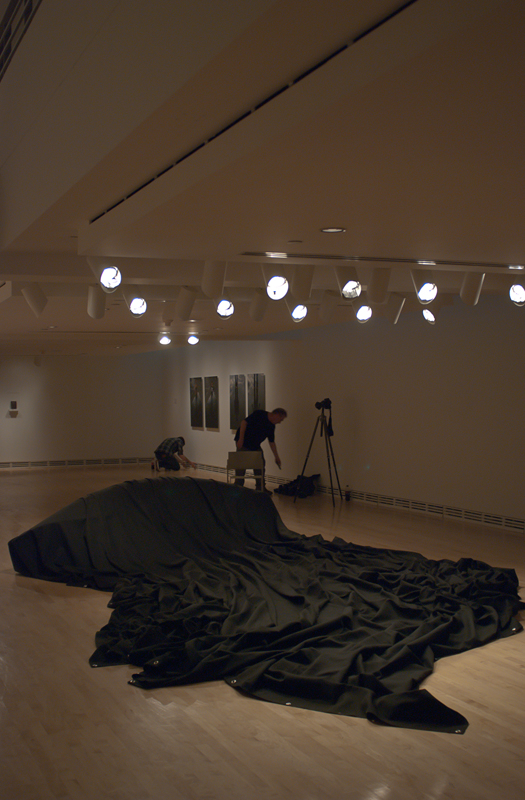Carleton University Art Gallery (CUAG) opened its exhibition What Is Said and What Is Done June 18 in conjunction with Sakahàn, the largest exhibition of contemporary, indigenous works currently at the National Gallery of Canada.
The multimedia exhibition displays video, sculpture, photography, and installation pieces by Anishinaabe artist Rebecca Belmore in Belmore’s first solo show to be held in Ottawa.
CUAG director Sandra Dyck said she considers Belmore a senior artist with a strong presence.
“She’s always been somebody who speaks truth to history. There aren’t many works but the impact of the work is very powerful emotionally and aesthetically.”
The viewer is initially confronted with a video installation titled “March 5, 1819,” in which Belmore re-enacts a tragic moment in the history of the Beothuk people who resided in Newfoundland. The video portrays the brutal capture of a Beothuk woman, Demasduit, by colonial settlers and the murder of her husband Nonosabasut as he tries to rescue her.
The experience is visceral, overwhelming, and harrowing as the viewer stands between two projectors displaying the hopeless attempt of a couple to escape their enclosing captors.
Curator Heather Anderson described the state of the viewer as between both “witness and perpetrator.”
“Is the man reaching out to you for help or are you the person who has just shot him? There is always this play of ambiguity in her work which I really like,” Anderson said.
Belmore said she specifically placed the actors in contemporary dress so the viewer may relate to the man and woman on an individual, everyday level.
“I think history can be sort of cold and it seems very distant. What does it matter? Why should I care? But I think it really is about trying to give historic moments or individuals some kind of emotional landscape to be within,” said Belmore.
Anderson described the multiplicity of the exhibition’s title.
“In a sense you can say, ‘what is done is done, let’s move on, move forward,’ but it’s also in a sense what is the difference between what is said and what is done. It could be read very tragic or you could also bring some optimism, some idea of change,” she said.
As the viewer walks through the gallery space, they are confronted with the ambiguous installation of a capsized canoe haunted by its lack of presence. It appears at the edge of an evocatively draped black cloth, suggesting the elegant motion of water.
“There’s an absence of whoever was in the canoe or if there was even someone in the canoe. It’s this idea of being in the process of turning over,” explained Belmore. “It is about the absent body and the idea of the power of water and that we should have more reverence for that body of water.”
The exhibition is provocative, powerful, and emotionally impactful. Belmore creates a temporal and spatial tension within her works through the representation of a people who are absent and yet alive in a historical and emotional moment of time.
“Our presence as aboriginal women is basically for the most part absent in history,” said Belmore. “I guess that’s why as an artist living in the moment here today I am interested in trying to look at that history or the lack of that history.”






